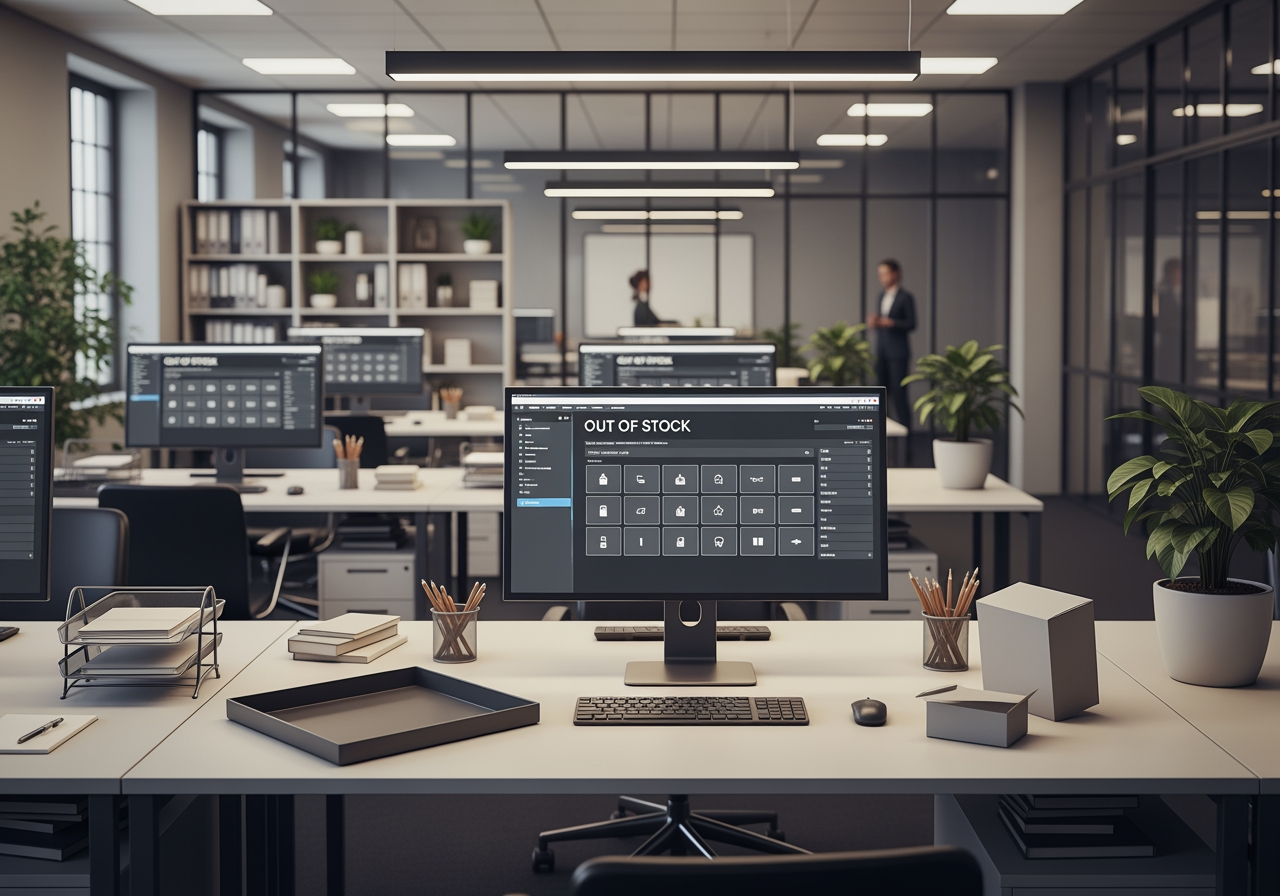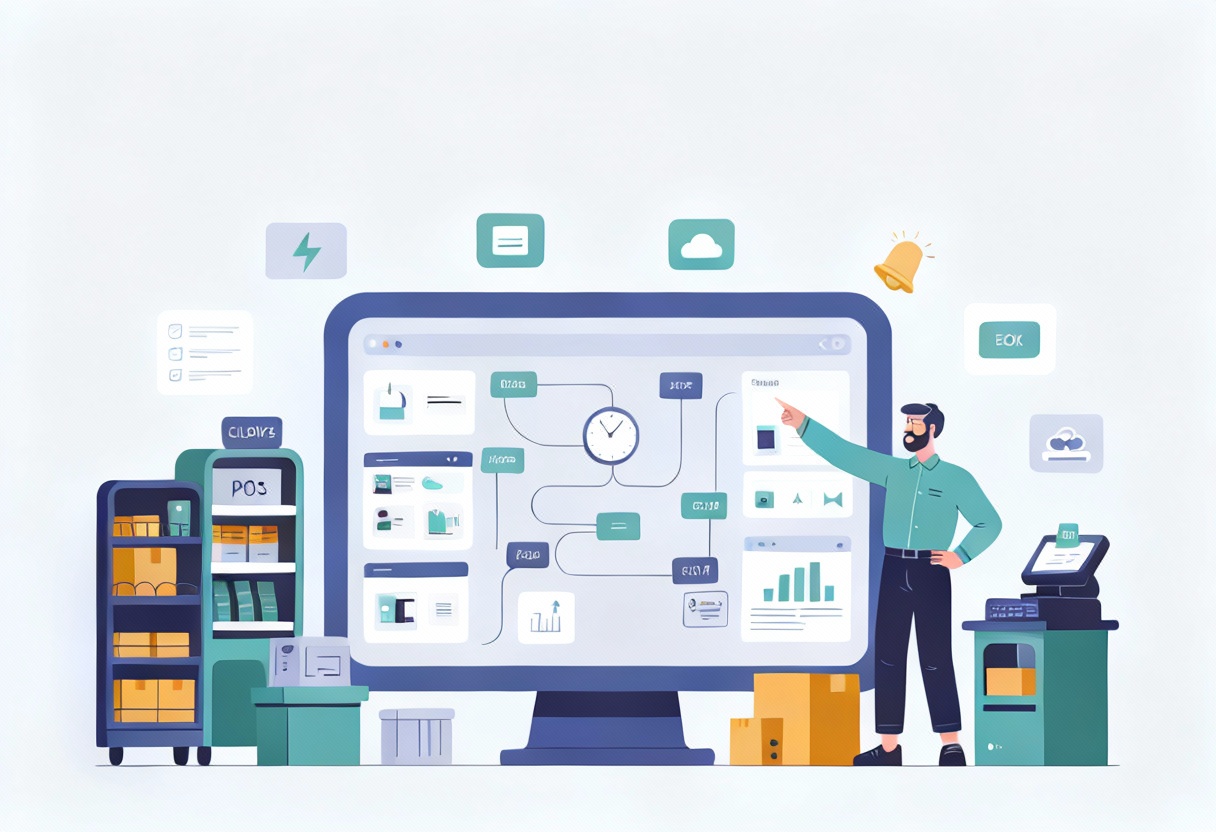For retailers, the phrase “out of stock” isn’t unfamiliar, but it’s always a situation none would want to be in. Then, what does out of stock mean, and how does it impact businesses and customers? In this article, we’ll break down the real meaning behind “Out of Stock,” explore its implications in retail and e-commerce, and provide actionable insights to help businesses reduce stockouts while improving the customer experience.
Highlight:
- Out of stock means a product is unavailable for purchase until replenished, leading to lost sales and potential customer dissatisfaction.
- Stockouts often occur due to poor inventory management, supply chain disruptions, or unexpected demand spikes.
What does out of stock mean?
To put it simply, the phrase indicates when customers cannot purchase the product because it’s unavailable in the store for immediate sale. In both online and brick-and-mortar stores, the “out of stock” status can lead to customer frustration, lost sales, and potential damage to brand loyalty if it happens too often.
Websites typically display this notice on the product page, signaling that the item cannot be added to the shopping cart. In physical stores, customers may encounter empty shelves or receive updates from staff that the product is unavailable. While temporary, stockouts can significantly affect a company’s revenue, especially if popular or seasonal items are unavailable at the wrong time.
The Difference Between Out of Stock and Backordered
Although often used interchangeably, “out of stock” and “backordered” are not the same. An “out of stock” status means the product is currently unavailable and cannot be purchased. Customers must wait until the retailer replenishes inventory before placing an order.
On the other hand, “backordered” indicates that the retailer has temporarily run out of stock but is still accepting orders. Customers can pay for the product in advance, and it will be shipped as soon as the next shipment arrives. This distinction is significant for customer experience. While out of stock results in missed opportunities, backordering can help maintain sales momentum and customer trust.
For example, if a retailer runs out of a trending gadget, an “out of stock” notice may cause customers to shop elsewhere. However, offering the item as “backordered” with a clear restock timeline reassures customers that they will receive the product, reducing the risk of churn. Businesses that leverage backorders effectively can minimize the negative impact of temporary inventory shortages.
Why Does Out of Stock Happen?
Stockouts occur due to several factors, ranging from poor inventory management to unexpected demand surges. The most common causes include:
- Inaccurate demand forecasting: Businesses may underestimate how much stock is needed during sales seasons or product launches.
- Supply chain disruptions: Shipping delays, raw material shortages, or supplier issues can result in inventory gaps.
- Inventory tracking errors: Manual tracking often leads to mistakes, such as overestimating available stock.
- Unexpected demand spikes: Viral trends or holiday seasons can deplete stock faster than expected.
According to a Harvard Business Review study, retailers lose nearly $1 trillion annually worldwide due to stockouts, overstocks, and returns combined. Around 21–43% of customers who encounter an out-of-stock item will purchase from a competitor instead. This shows that stockouts not only harm revenue but also long-term customer loyalty.
How Retailers Can Prevent The Out of Stock Situation?
Stockouts are one of the most frustrating issues for both retailers and customers. According to IHL Group, retailers lose nearly $1.73 trillion in sales annually worldwide due to stockouts, overstocks, and returns combined. The good news is that businesses can significantly reduce these losses by adopting a proactive approach.
Below are proven strategies, backed by real-world examples and practices, to prevent stockouts.
►►► Optimal solution set for businesses: Multi store POS, Next-gen POS, Inventory Management Software (MSI), Self Service, Automation, Backorders
Implement Real-Time Inventory Tracking
One of the most effective methods to combat stockouts is implementing real-time inventory tracking systems. Traditional stock counts are prone to errors, delays, and miscommunication. Modern retail environments demand accurate, instantaneous visibility.
Benefits:
- Accurate Stock Data: Retailers know exactly what’s available across warehouses, stores, and online platforms.
- Quick Identification of Low Stock: Early alerts help managers replenish before items sell out.
- Omnichannel Consistency: Customers shopping online or in-store receive the same information, reducing the risk of overselling or misrepresentation.
Adopt Automated Reordering Systems
Even with accurate tracking, human delays in replenishment can cause stockouts. Automated reordering systems solve this challenge by initiating restocking based on set thresholds.
How Automated Reordering Works
- Minimum and maximum stock levels are defined for each product.
- When inventory falls below the threshold, the system automatically places orders with suppliers.
- Integration with sales forecasts ensures an optimal balance, avoiding both shortages and overstock.
Advantages for Retailers
- Time Savings: Less manual monitoring, freeing up staff for customer-facing roles.
- Consistency: Eliminates human error in reordering.
- Efficiency: Keeps the supply chain moving smoothly without last-minute scrambles.
Retailers using automated replenishment not only prevent stockouts but also optimize inventory carrying costs.
Improve Demand Forecasting
Accurate forecasting is crucial for balancing supply and demand. When analyzing historical sales data, seasonal spikes, and even external factors like weather or holidays, businesses can anticipate customer needs.
For instance, toy retailers must forecast accurately before Christmas, when demand surges. Poor forecasting in 2020 caused many retailers to run out of popular items like game consoles, frustrating customers.
Build Strong Supplier Relationships
Suppliers play a significant role in keeping shelves stocked. Having a strong, reliable supplier relationship allows for faster response times during urgent restocks. For example, during the pandemic, companies with diversified supplier networks recovered stock quickly than those depending on a single vendor.
Retailers should communicate regularly with suppliers, negotiate backup arrangements, and maintain safety stock for high-demand items.
Offer Substitutions or Alternatives
Even when a product is unavailable, offering alternatives helps retain sales. With a robust POS system like ConnectPOS, retailers can recommend similar products in real-time, ensuring customers still find what they need. ConnectPOS also supports:
- Omnichannel Inventory Synchronization: ConnectPOS allows retailers to sync inventory across multiple sales channels online stores, physical shops, and warehouses in real time.
- Smart Product Recommendations: Beyond simple substitutions, ConnectPOS leverages AI-driven recommendations to suggest relevant alternatives.
- Customer Notification and Back-in-Stock Alerts: ConnectPOS also enables retailers to keep customers informed. If a product is out of stock, customers can opt to receive automatic notifications when it’s available again.
- Cross-Selling and Upselling Opportunities: Instead of simply preventing a lost sale, ConnectPOS turns stockouts into sales opportunities. When recommending bundled products or complementary items, retailers can often increase the average order value.
FAQs: What Does Out of Stock Mean?
- Can out-of-stock items still be ordered online?
Usually, no. Out-of-stock items cannot be purchased until restocked. However, if labeled as “backordered,” customers may still place an order for future fulfillment.
- How do stockouts affect businesses?
Stockouts lead to lost sales, dissatisfied customers, and potential long-term brand damage. Many customers switch to competitors if a product is consistently unavailable.
- Is it better to hide or display out-of-stock items online?
It’s best to display them with a clear “out of stock” label. This maintains transparency and allows customers to sign up for restock alerts, keeping them engaged with the brand.
Conclusion
So, what does out of stock mean? It’s more than a temporary inconvenience; it represents lost revenue, customer frustration, and operational inefficiency. Stockouts can also push loyal customers toward competitors, creating long-term business risks that go beyond a single missed sale.
Ready to stop losing sales due to stockouts? Contact us to explore how their POS solution can revolutionize your inventory management and keep your customers coming back.
►►► Optimal solution set for businesses: Shopify POS, Magento POS, BigCommerce POS, WooCommerce POS, NetSuite POS, E-Commerce POS



